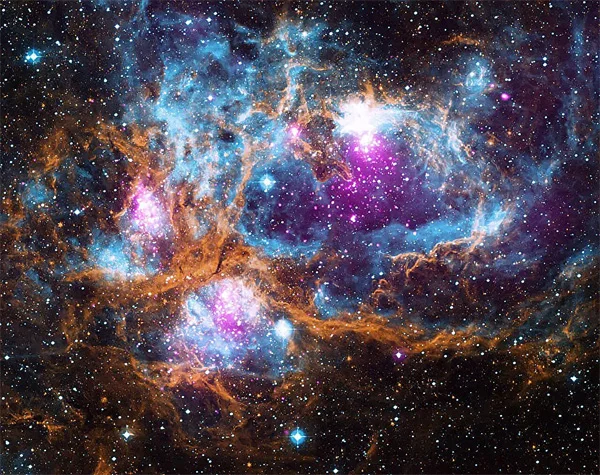A “cosmic glitch” in gravity

Researchers from the Universities of Waterloo and British Columbia have shed new light on the behavior of gravity on a cosmic scale, suggesting a possible “cosmic glitch” that could explain the strange observations that challenge Albert Einstein’s theory of general relativity.
For a century, general relativity has been the cornerstone of modern physics, describing gravity as a force that not only affects the three spatial dimensions, but also time. This model has been fundamental for understanding phenomena from the Big Bang to the visualization of black holes. However, when observing gravity on a larger scale, such as that of galaxy clusters, scientists noticed inconsistencies.
Robin Wen, lead author of the study and recent graduate in Mathematical Physics from the University of Waterloo, expressed: “It’s almost as if gravity itself has stopped perfectly matching Einstein’s theory on cosmic scales. We’re calling this inconsistency the ‘cosmic glitch’: gravity becomes about one percent weaker at distances of billions of light years.”
The search for a mathematical model that explains these inconsistencies is not new. For more than twenty years, physicists and astronomers have been working to solve this enigma, with significant efforts coming from Waterloo, a center for advanced gravitational research.
Niayesh Afshordi, professor of astrophysics at the University of Waterloo and researcher at the Perimeter Institute, added: “We found that at the same scales at which the universe appears to be expanding acceleratingly, Einstein’s theory may not be enough.”
The team proposes a model that modifies and expands Einstein’s equations, resolving the observed discrepancies without compromising the successes of general relativity. “Think of it as a footnote to Einstein’s theory,” Wen explained. “When you reach a cosmic scale, terms and conditions apply.”
Afshordi concluded with an optimistic view: “This new model may be just the first clue in a cosmic puzzle that we are beginning to solve across space and time.”
The paper was published in the Journal of Cosmology and Astroparticle Physics.






